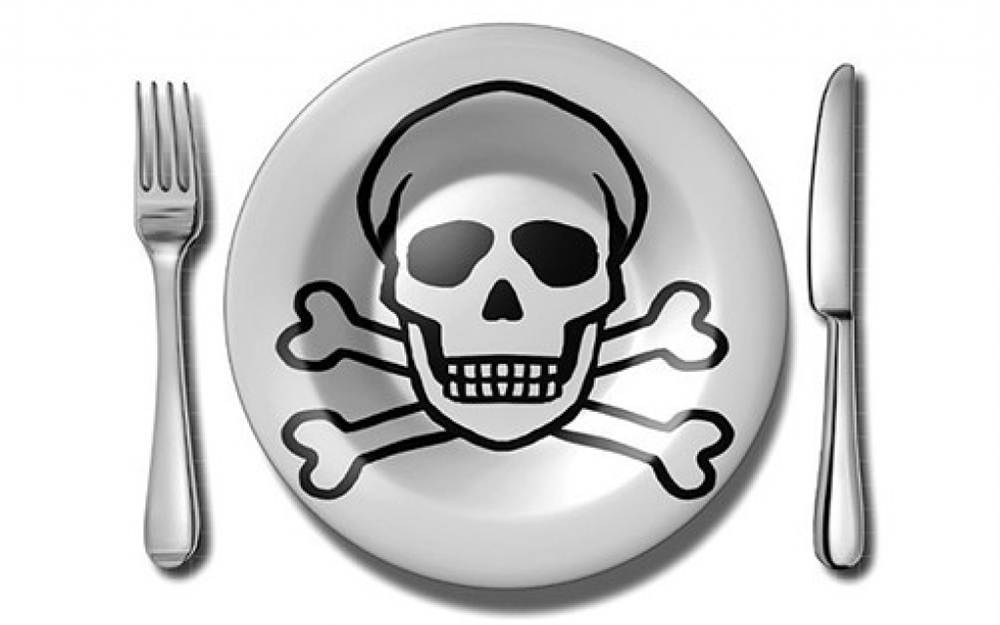
BY HADDON LIBBY
August is hot. It is a time of year when many of us enjoy outdoor picnics or barbecues with family and friends. It is also the time of year when many of us get sick with food poisoning.
The Center for Disease Control states that one in six people can expect to get sick from the food that they eat with 128,000 of us ending up in the hospital and 3,000 dying. The US Department of Agriculture estimates that food poisoning (aka norovirus) costs the United States $15.7 billion annually.
Undercooked meats are the foods most likely to make us sick. Fish is responsible for 17% of all food poisoning incidences followed by chicken/fowl (11%), beef (8%), shellfish (8%), pork (7%), raw vegetables (6%) and fruit (6%).
The bacteria that cause food poisoning breed the fastest between the temperatures of 40 and 140 degrees Fahrenreit (aka the Danger Zone). As such, it is important to keep your food above or below that temperate at all times.
When cooking food, make sure that your food reaches a core temperate of at least 160 degrees (165 degrees for chicken). If microwaving, the minimum temperate increases to 165 degrees. Food thermometers are the best way to confirm this.
If you cannot keep the temperature of your cooked food outside of the Danger Zone during a picnic, remember that you have up to two hours to eat the cooked food before bacteria levels increase to potentially unsafe levels.
 When it comes to fruit and vegetables, many people fail to realize that their produce can become contaminated with bacteria somewhere along the food chain. The contamination could be from fertilizer in the fields, human handling or cross-contamination. Cross-contamination is common in the home and many restaurants as food preparers often cut produce on the same surfaces used to prepare raw meat without adequately sterilizing surfaces thus exposing the raw product to pathogens that need to be killed at high temperatures.
When it comes to fruit and vegetables, many people fail to realize that their produce can become contaminated with bacteria somewhere along the food chain. The contamination could be from fertilizer in the fields, human handling or cross-contamination. Cross-contamination is common in the home and many restaurants as food preparers often cut produce on the same surfaces used to prepare raw meat without adequately sterilizing surfaces thus exposing the raw product to pathogens that need to be killed at high temperatures.
This points out a need of paramount importance in food preparation – cleanliness. The sad truth is that many people are not very clean. Remember to always wash your hands with hot, soapy water for at least twenty seconds before touching food. Also remember to wash all produce with clean cool water. Cut away all spoiled or damaged parts as well. If you buy packaged produce that says ‘pre-washed’ on it, you do not need to wash those items.
When it comes to kitchen surfaces, use different cutting boards for meat, chicken, fish and produce. After cleaning a surface with hot soapy water, spray a diluted mix of white vinegar and water on that surface and let it dry through evaporation in order to kill the most bacteria possible.
When defrosting meat, do not leave it out. Meat should always defrost in the refrigerator. Be careful not to let any of the juices of your meats touch anything else in the refrigerator. If you need to defrost the meat faster, submerge it in cold, running water with no exposure to air.
When it comes to eggs, remember that pasteurized eggs have been heated to a temperature that allows them to be used in raw food products. Any other eggs need to be heated to 140 degrees for three minutes in order to be safe.
While you and I may be very careful with food handling, most people are not. This can present a dilemma when you are at a gathering and you have no control over food preparation. As such, stay away from high risk foods like hamburgers with pink centers, products with eggs and seafood unless you are certain that the food has not been out long and/or has been held at temperatures above or below the Danger Zone.
For more tips, go to www.FoodSafety.gov.
Haddon Libby is Portfolio Manager and Fiduciary at Winslow Drake Investment Management where he serves as Managing Partner. Haddon can be reached at 760.449.6349 or HLibby@WinslowDrake.com. For more information, go to www.WinslowDrake.com.










































